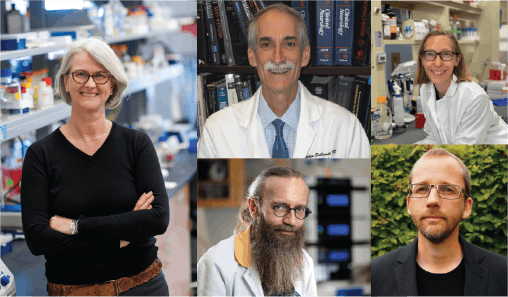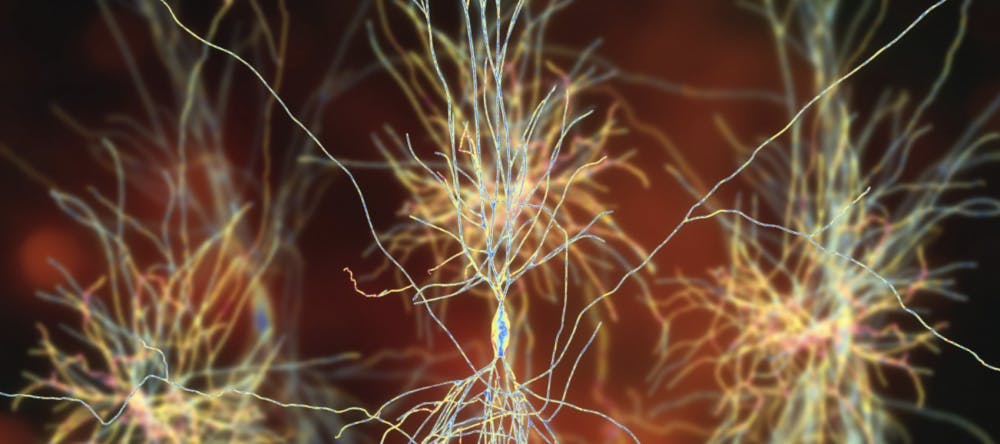The University is establishing a Center for Alzheimer’s Disease Research with the support of two gifts totaling $30 million from anonymous donors. The center will combine clinical and laboratory-based research teams from the University and partner teams from Sweden to aid in the detection and treatment of Alzheimer’s disease.
The “main goal is to change the trajectory of Alzheimer's disease in the hope that we can really contribute in a positive way to research discoveries and help in the translation of those discoveries into patient care,” said Diane Lipscombe, director of the Robert J. & Nancy D. Carney Institute for Brain Science. Liscombe will serve as the initial director of the new center.
Alzheimer's disease is a progressive and heterogeneous neurodegenerative disease that encompasses a collection of diseases stemming from many different origins, according to Lipscombe. “It is really important for us to be thinking about the various routes to the kind of neurodegeneration that is characteristic of Alzheimer's disease,” she said.
The center will provide support for research teams to study different aspects of the disease while fostering collaboration and scientific advances, according to Stephen Salloway, director of neurology and the memory and aging program at Butler Hospital. Salloway will serve as the associate director of the new center.
“This is a milestone moment for Brown,” said Salloway, who is also the Martin M. Zucker professor of psychiatry and human behavior and a professor of neurology. “What we're doing here with the center is dedicating the resources of Brown faculty, students and laboratories across departments and institutions to make a difference against Alzheimer's.”
The center will facilitate research at every level across the University, including undergraduates, graduate students, postdoctoral students and faculty. Affiliated groups include the School of Public Health, University science departments, the Providence VA Medical Center, Rhode Island Hospital and Butler Hospital.
[caption id="" align="aligncenter" width="508"]

Before the center was approved, the University hosted town halls with faculty from more than 20 departments to create a space for researchers to meet and “stimulate new collaborations,” Lipscombe said.
The center will be a hub for research projects focused not only on Alzheimer's specifically but also areas related to the disease. “It's going to bring together all these labs that are working in different areas trying to understand and treat Alzheimer's disease,” said Ashley Webb, assistant professor of molecular biology, cell biology and biochemistry.
For example, Webb’s lab focuses on the molecular mechanisms of aging, which is the “number one risk factor for Alzheimer's disease” and which shares many common features with Alzheimer’s pathology, she said.
Funding for the center will also support an international partnership with Professor Oskar Hansson’s research team at Lund University in Sweden and Professor Henrik Zetterberg’s team from the University of Gothenburg.
The collaboration will lead to the establishment of a facility at Brown to help identify early biomarkers, or diagnostic measurements, of Alzheimer’s disease. The facility is set to open in the next six months, according to Lipscombe.
“A lot of research shows that Alzheimer’s disease starts about 20 years or several decades before very overt symptoms, like memory impairments, so there is a lot of activity now to find treatments to delay or even stop the disease,” Hansson said. “There's accumulating evidence indicating that if you start with treatments quite late in the disease, when people are symptomatic, a lot of the neurodegeneration has already occurred and there's widespread damage in the brain.”
A study carried out by Hansson, Zetterberg and Salloway aims to develop methods for identifying the earliest stages of Alzheimer's disease with a cohort of 500 presymptomatic individuals.
The goal is to determine the “optimal methods” for identifying Alzheimer's, Hansson added.
The team is using plasma biomarkers, a type of blood test to detect risk for Alzheimer's and help determine its rate of progression. Additionally, there are “cognitive tests we can do for memory and executive function,” Hansson said.
While tests like brain imaging can help with visualization of Alzheimer's, “they are expensive and also involve exposure to a certain degree of radiation, so you can't do them too frequently,” Zetterberg said.
Using blood biomarkers, which can be tested with a patient’s blood sample, “makes the study so much easier for study participants, and it will also make it possible to do more frequent sampling,” Zetterberg added.
“We're going to be working with the world leaders in this area from Sweden,” said Salloway, who will be researching in the biomarker facility. “It's really a community effort, and I think we have the right community here to play a part among other centers around the world.”
“I'm really excited about the opportunity to interact with other investigators in the field working towards this common goal of treating the disease,” Webb said. “The center is really going to be an amazing intellectual resource for the community.”
While research is already underway, the center will soon initiate a search for a full-time director.
“We’re very interested in ensuring that we're doing recruitment of diverse faculty,” Lipscombe said. “I would like to really cast a wide net in the area of Alzheimer's disease and to look for the very best candidate, while prioritizing a number of different things: scientific excellence, care about the disease and the disorder and care about the patients and the lives that are affected.”
Correction: A previous version of the article incorrectly spelled “Robert J. & Nancy D. Carney Institute for Brain Science.” The Herald regrets the error.
Gabriella was a Science & Research editor at The Herald.





